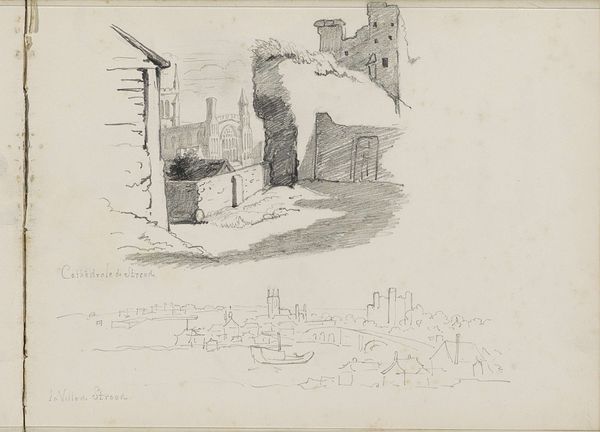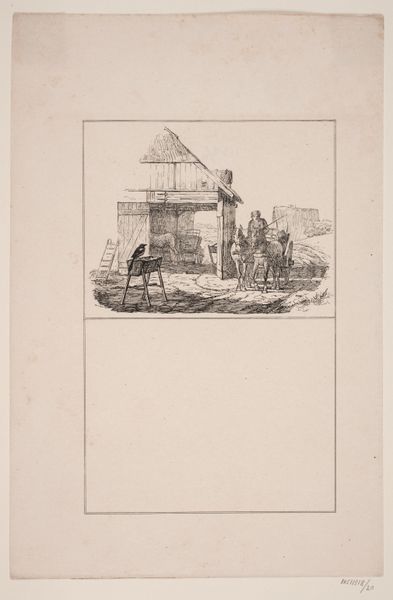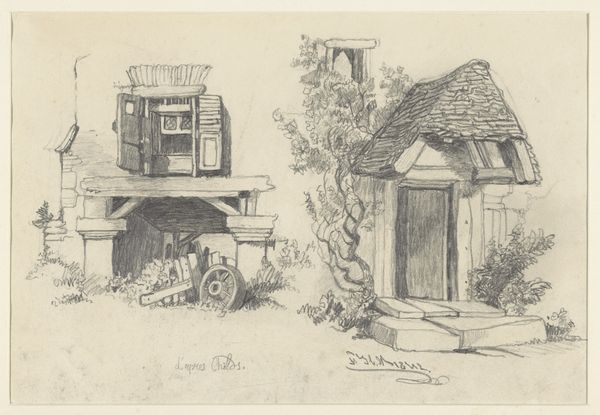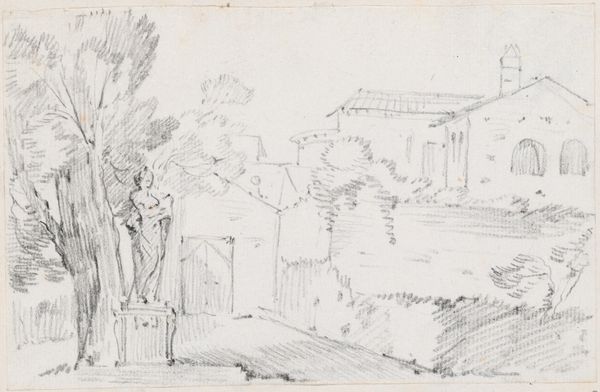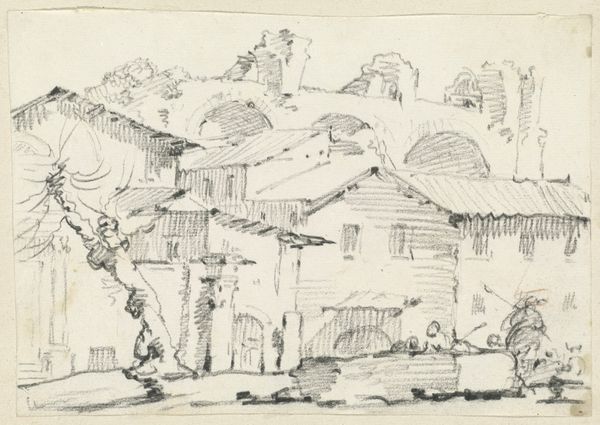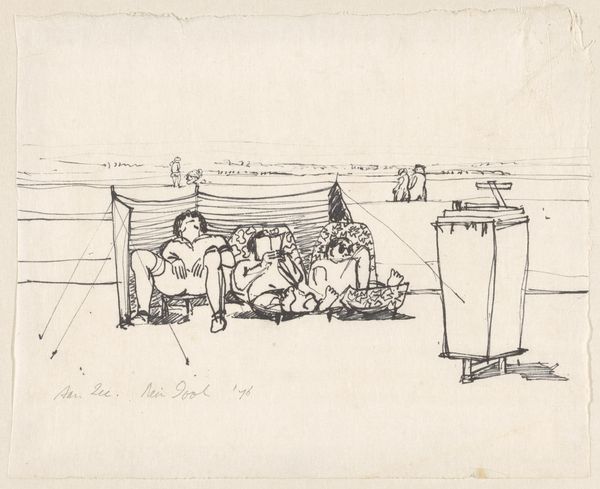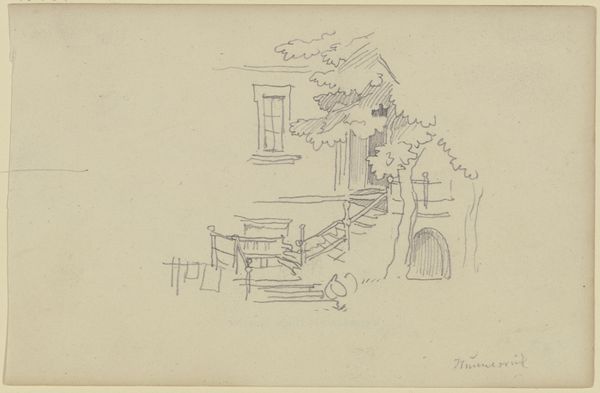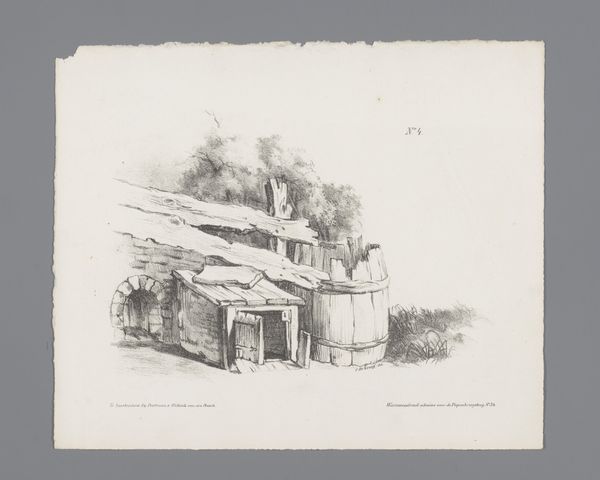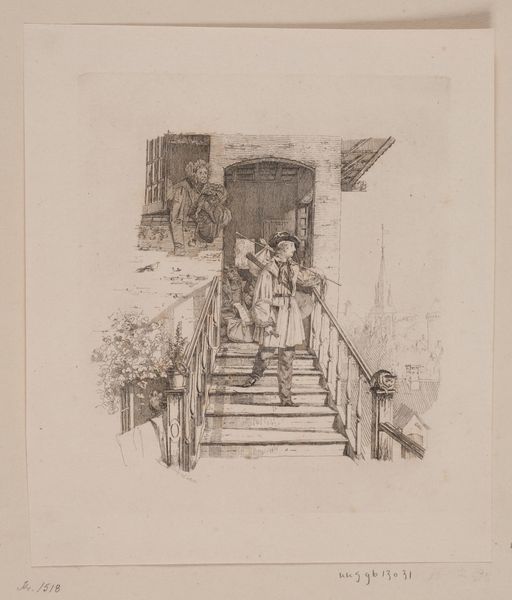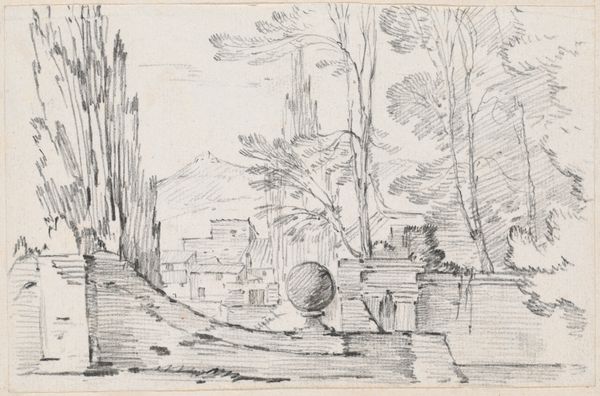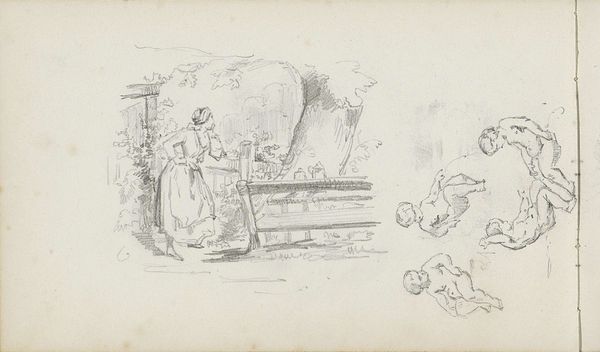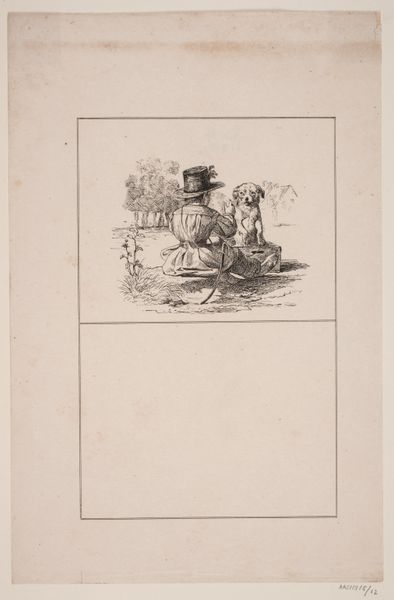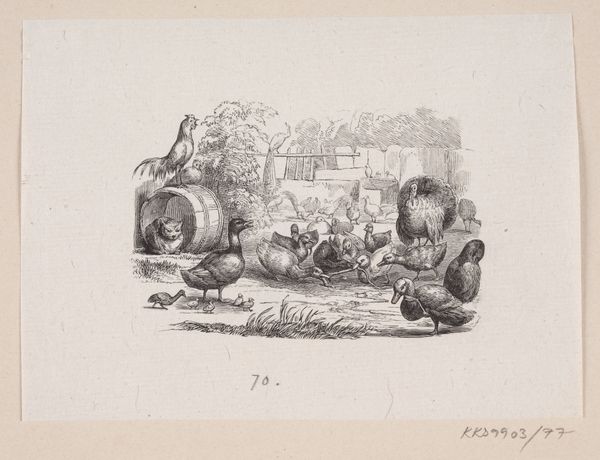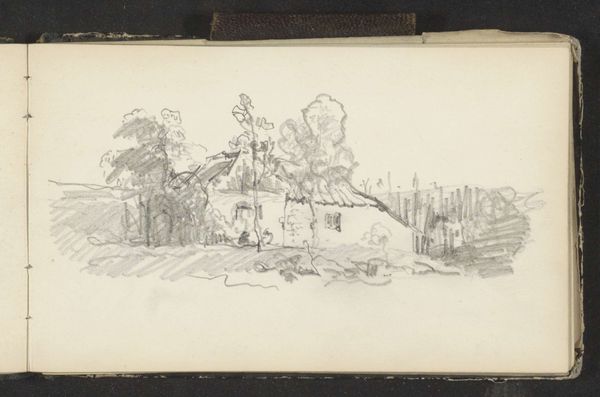
drawing, paper, ink
#
drawing
#
landscape
#
paper
#
ink
#
genre-painting
Dimensions: height 223 mm, width 288 mm
Copyright: Rijks Museum: Open Domain
Curator: Gijsbertus Johannes van Overbeek created this genre painting in ink on paper, titled "Jongens spelen met een bak en plank," dating from somewhere between 1892 and 1947. The sketch shows boys at play. My immediate reaction is the composition is cleverly structured, directing the viewer’s eye across the tableau in a simple yet very dynamic, satisfying flow. Editor: I feel a certain nostalgia observing the drawing; a depiction of children finding simple pleasures contrasts with the current landscape of screen-saturated pastimes. The limited use of medium, simple ink lines on plain paper, further emphasizes a minimalist perspective to childhood activities and values. Curator: Indeed. The skillful employment of line is noteworthy. Note how varied lineweights are employed to create depth and contrast, giving the drawing remarkable spatial complexity, particularly considering its simplicity and restricted range of medium. Editor: I agree. And the surrounding buildings offer visual signifiers of a stable social backdrop. Considering this was made during a period encompassing significant world upheaval, from both world wars to economic crises, such renderings offered viewers both an idealized and somewhat inaccessible experience. Curator: Interesting point! You draw my attention towards semiotics, where buildings become metaphors for more secure times. Focusing on form, one can see a complex relationship, if opposing one. Buildings offer linear sharpness whilst boy's actions present curved energy of child's play; offering contrasts and similarities at play within composition as a whole. Editor: Exactly, especially as gender identity and expected male behavior changed greatly through that era, in light of colonialism and conflict. Curator: Such social reflections encourage deeper introspection, drawing lines connecting not only past artworks within present societal awareness, but into prospective artistic developments awaiting to emerge; creating art that serves greater society now as art, serving posterity thereafter! Editor: A potent final sentiment, bridging generations to understand human perspectives—past, present, and hopefully a better future.
Comments
No comments
Be the first to comment and join the conversation on the ultimate creative platform.
